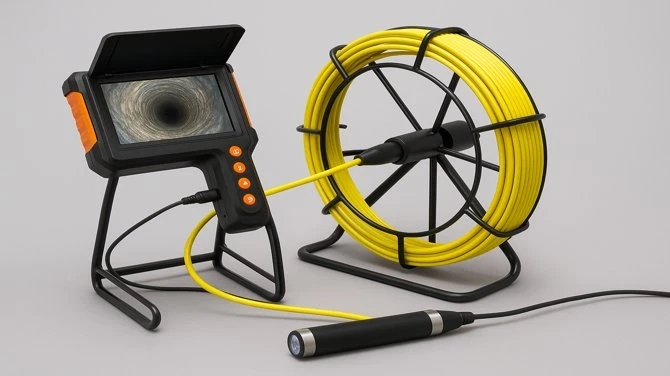How to Use a Pipe Inspection Camera: A Practical Guide for Homeowners and Professionals
When it comes to diagnosing hidden plumbing issues, a pipe inspection camera is one of the most valuable tools you can have. Whether you're a professional drainlayer or a homeowner dealing with recurring blockages, this smart piece of equipment can save time, money, and a lot of guesswork.
In this guide, we’ll break down exactly how to use a pipe inspection camera, when to use it, what to look for, and tips to get the most accurate results.
What Is a Pipe Inspection Camera?
A pipe inspection camera, also known as a drain camera or sewer camera, is a waterproof device attached to a long flexible cable. It’s inserted into drains, sewer lines, or pipes to capture live video footage of the inside. The feed is displayed on a monitor, helping you spot:
Tree root intrusions
Cracks or corrosion
Blockages or collapsed pipes
Leaks or pooling water
Build-up of grease or debris
When Should You Use a Pipe Inspection Camera?
Here are common scenarios where a pipe inspection camera is incredibly useful:
Persistent Drain Blockages: When standard methods don’t clear a blockage
Pre-Purchase Inspections: To check underground drainage before buying a property
After Earthquakes or Ground Movement: To check for pipe misalignment or cracks
Before Excavation: To locate underground piping
Post-Repair Checks: To confirm a fix or installation was successful
For businesses offering drain services, a camera inspection is an essential part of transparent, professional reporting.
How to Use a Pipe Inspection Camera (Step-by-Step)
1. Choose the Right Camera for the Job
Pipe inspection cameras come in various sizes and lengths. Make sure your camera head is small enough to fit into the target pipe, and that the cable length is sufficient for your inspection.
For residential pipes: A small camera head (23mm–35mm) and 20m–40m cable
For large sewer mains: Larger camera heads and longer cables (50m+)
2. Clean the Access Point
Open a clean-out or access point to the pipe and remove any obstructions or debris that might damage the camera on entry.
3. Power On and Set Up the Monitor
Connect the camera to the monitor or handheld screen. Many models also have the option to record the footage or save images.
Ensure the battery is fully charged or the unit is plugged in, and adjust any lighting or camera settings.
4. Insert the Camera Carefully
Gently feed the cable into the pipe while watching the live video feed. Move slowly to avoid damaging the lens or getting snagged on internal defects.
Pro tip: Twist the cable slightly to help navigate bends or junctions in the pipe.
5. Monitor and Interpret the Footage
Look for signs of damage or blockage as you progress. Common things to spot:
- Water pooling = low points or blockages
- Tree roots = hair-like growths breaking into the pipe
- Cracks = fine lines or separation in pipe material
- Grease build-up = slimy residue coating the inside
- Displacement = misalignment between pipe sections
Take screenshots or record clips as you go to review later or share with a plumber or customer.
6. Mark the Location (If Needed)
Many professional-grade cameras include a sonde transmitter, allowing you to locate the exact position of an issue above ground using a locator wand. This is critical for targeted repairs or digging.
7. Withdraw the Camera and Clean Up
Once your inspection is complete, slowly pull the camera back out, clean it with warm water and disinfectant, and dry it properly before storing.
Tips for Better Pipe Camera Inspections
Use gloves and safety gear—especially for sewer inspections
Clean the lens regularly for clear visibility
Take your time—rushing increases the risk of missing issues
- Record everything—it helps with reports and follow-ups
- Learn how to interpret footage or work with a professional for accurate diagnosis
Final Thoughts
Using a pipe inspection camera is one of the smartest ways to detect plumbing issues before they become costly repairs. Whether you're checking an old drain in your backyard or running a commercial inspection service, the ability to see inside pipes gives you a major advantage.


